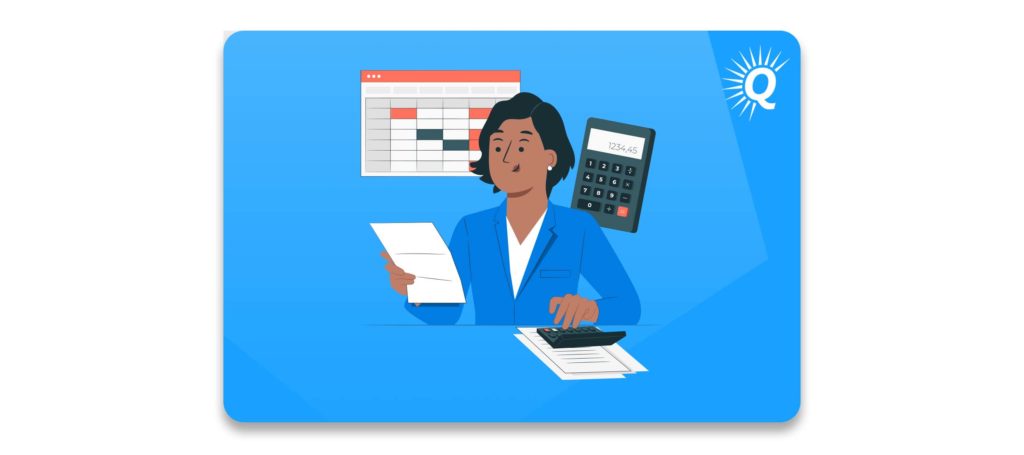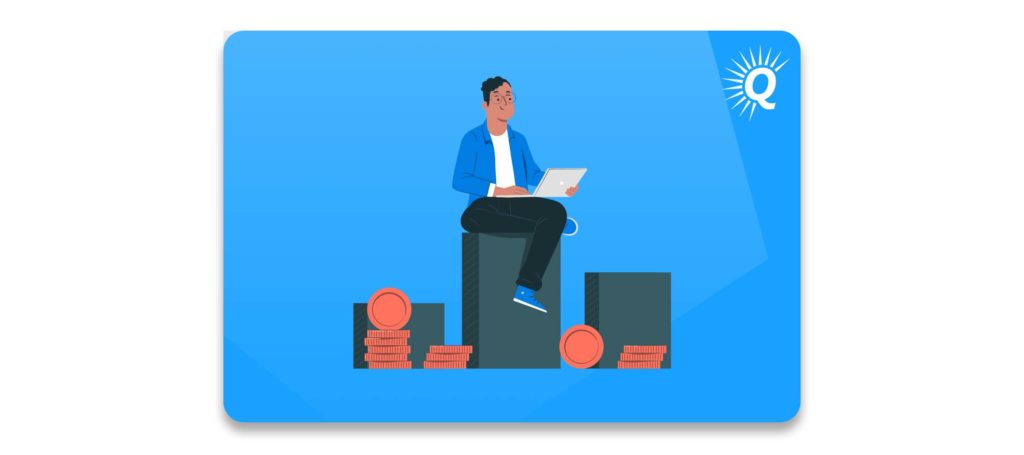Topics:
Never Miss a Beat - Get Updates Direct to Your Inbox
FILTER:


How to Sell Your Website for Maximum Value: Here’s Your Step-By-Step Guide
By Quiet Light
The old adage goes, “Success equals preparation plus opportunity.” In the world of online, knowing how to sell your website is an important first step in landing a successful exit. By combining the right knowledge with careful planning, you can work to maximize the purchase price and win favorable deal terms when you do decide to sell.
In this article, we will discuss several important questions and topics, including:
- How to value your website
- How to sell your website
- Where to sell your website
- How long does it take to sell a website?


How Much Is Your Website Worth?
As a website owner, it is common to wonder how much your website is actually worth. Knowing how much your website is worth, and what drives its value, is crucial to creating a successful exit.
Most obviously, knowing the value of your website will help you determine how much to ask for it when you do decide to sell. Prior to that, however, by knowing what drives the value of your website you can work to optimize your business long before you plan to sell it.
“Knowing how much your website is worth, and what drives its value, is crucial to creating a successful exit.”
SDE multiple method
There are many different ways to calculate the value of your website. Initially, many business owners turn to an online website worth calculator to determine their site’s value. These tools have limitations, however.
Thinking of Selling Your Business?
Get a free, individually-tailored valuation and business-readiness assessment. Sell when you're ready. Not a minute before.
The most trusted and respected mode of website valuation is the SDE multiple method. The SDE multiple method is made up of two components: the seller’s discretionary earnings, or SDE, and the multiple.
Put simply, website value = SDE x the multiple.
While the formula is straightforward enough, there are many different components that go into calculating both the SDE and the multiple.
SDE
The seller’s discretionary earnings are the earnings generated by the business that are available to the owner to spend on discretionary items. It is also sometimes called the “owner’s benefit,” meaning the value the business generates for the owner.
To calculate SDE, calculate the business’s profits before certain expenses are accounted for, including:
- Taxes
- Interest expenses
- One-time investments
- Owner’s salary
- Noncash expenses
- Unrelated income or costs
Compared to income, SDE attempts to capture the true money-generating capacity of the business. This makes it a better metric for comparing the performance of multiple businesses.
For example, let’s say you incur non-required travel expenses that are billed to your business in the amount of $10,000. A new owner would not necessarily need to incur these expenses moving forward. By adding back the $10,000 in discretionary expenses to the income, you more accurately depict the total benefit the business generates for the owner.


As you can imagine, it is very important to accurately include, or add back, all allowed discretionary expenses when calculating SDE. When you don’t, you may dramatically undervalue your business. At the same time, you do not want to go overboard with your add-backs and overestimate the value of your company either.
For this reason, many entrepreneurs find it helpful to work with a qualified business Advisor during the valuation process. The right Advisor will know which expenses to add back and which to leave, helping you create an accurate and reliable valuation.
The multiple
The multiple is a number that is multiplied by SDE to arrive at your total business value. Multiples vary from business to business and serve to capture a company’s perceived value. Two businesses with identical SDE figures could be valued dramatically differently by having different multiples.
Many different factors influence the multiple, but these factors can generally be grouped into four main categories, often called the Four Pillars of Value. These four categories serve to encapsulate the main drivers of a company’s value.
The Four Pillars of Value include:
- Growth
- Risk
- Transferability
- Documentation
The past, current, and future growth trends of a company and the industry it operates in all affect its perceived value. The stronger the growth expectations, the more valuable the company will be.
Risk works the opposite way. The more risk a company entails, the less valuable it will be. Risk can come from many different factors. For example, if the company’s revenue relies on a rights reserved trademark that may potentially be deemed unlawful in an upcoming court case, the company will be looked at as a riskier bet.
In addition, risk is incurred when the success of your business relies on any single point of failure. If you only have one revenue stream, let’s say selling an online course, you may consider adding another digital product, engaging in affiliate marketing, adding an online store, or allowing a display ad.


How to Reduce Risk
When it comes to reducing risk for a website, where your traffic comes from also matters. By diversifying the sources of your website traffic, you serve to reduce your site’s risk.
Transferability refers to the ease with which a company can successfully be transferred to a new owner without its performance being negatively impacted. The more transferable a company is, the more attractive it will be to a potential buyer, driving up its value.
Lastly, clear, thorough, and accurate documentation of accounting records, operating procedures, and business activities serves to drive up the value of a business, all other things being equal.
As with calculating SDE, determining your multiple is not always a straightforward process. Having experience with the process helps ensure an accurate assessment. For this reason, a qualified business Advisor can help you determine the right multiple for your website.
“Multiples vary from business to business and serve to capture the perceived value of a company.”
How to Sell Your Website
Selling an online business can be intimidating, but the process can be made simpler when broken down into separate steps. In order to create a successful exit and remove stress, it is helpful to know the steps involved in selling your website ahead of time.


In general, the phases of selling a website include:
- Preparation
- Listing
- Discovery
- Letter of intent
- Due diligence
- Transition planning
- Asset purchase agreement
- Closing
- Training period
“In order to create a successful exit and remove stress, it is helpful to know the steps involved in selling your website ahead of time.”
Preparation
Adequately preparing to sell your site ahead of time is perhaps the most important action you need to take to maximize your profit and win favorable deal terms. There are several crucial steps to take during this phase.
For starters, take stock of how your site stacks up against the Four Pillars of Value. Once you have analyzed your business operations, take the time necessary to mitigate weaknesses and optimize your company. Doing so will drive up the value of your website and create a more competitive bidding environment when it comes time to sell.
Buy a Profitable Online Business
Outsmart the startup game and check out our listings. You can request a summary on any business without any further obligation.
Part of this will include making sure you have adequately prepared your company’s documentation, including Google Analytics data, accounting records, and standard operating procedures.
In addition, you will need to create a marketing package for your company. These documents contain the asking price, relevant performance data, and a description and narrative of your company. Interested buyers use your marketing package to determine if they are interested in purchasing your business.
Properly preparing your website for the market can be a time-intensive process. Ideally, you should start preparing for your exit 12–24 months before you plan on selling. Failing to do so may cause you to earn less than you could have otherwise if you had adequately prepared.
“Ideally, you should start preparing for your exit 12–24 months before you plan on selling.”
Listing
Once you have prepared your website to be sold, it is time to list it for sale. There are many different online business listing sites available where you can list your company directly. A business Advisor can also help you attract buyers and sell your site. We will discuss this step in more detail in the next section.


Discovery
Buyers who are seriously interested in your website will reach out to you to learn more about your business and get a feel for you as a business owner. You may be handling phone calls, talking with interested parties, and answering their questions. This process is often called the discovery phase.
It is common for you and the buyer to sign a non-disclosure agreement during discovery. This will legally require the buyer to maintain the confidentiality of the business information they are privy to during this process.
They may be interested in reviewing your financial records, site traffic statistics, vendor relationships (if any), and more.
Letter of intent
If a prospective buyer is still interested after the discovery period, both parties sign a letter of intent. This document states that the buyer intends to purchase the business for an agreed-upon price as long as certain criteria are met.
The letter of intent is not the final sales document. It is, however, a serious indication that the buyer wishes to purchase your company. Once it is signed, both parties move on to the due-diligence process.
Due diligence
During due diligence, the buyer painstakingly examines your business to ensure all claims made by you regarding the performance of the business are true and accurate. In essence, they are working to verify that they are buying the company they think they are buying.


Due diligence can be a nerve-wracking process for both the buyer and the seller. Be sure to answer all questions truthfully and in a timely manner.
It is common for buyers to hire due-diligence experts to facilitate this process. While this may raise the transaction fee amount for them, it does provide peace of mind in an otherwise sensitive endeavor.
Transition planning
After the due-diligence process has been completed to the satisfaction of the buyer, you enter a period of transition planning. During this phase, the two of you will negotiate exact selling and transition terms, create merchant accounts, and set up bank accounts.
Asset purchase agreement
The asset purchase agreement, or APA, is a legally binding document that spells out the terms of the sale in detail. Both the buyer and seller sign the APA in order to finalize the deal.
Closing
Once the APA has been drafted and signed, it is time for the assets to be transferred. The buyer places the agreed-upon funds into an escrow account, the seller transfers the assets (both tangible and intangible, such as the domain name) to the buyer, and the funds are released from the account to the seller.


Training period
Most business transactions include a post-sale training period. During this phase, the seller trains the new owner and any staff on how to run the website. Depending on the agreement, this period could last for several months.
Where to Sell Your Website
One of the more common questions website owners have about selling their site is where they actually go to list their business and notify potential buyers of its availability. Fortunately, there are several options available.
Business listing platforms
Online business listing platforms make it easy to list your company for sale. Whether you review products online directly from your website or run a content site, business listing platforms are a great place to spread the word that your website is for sale.
Working with a business Advisor
In addition to listing your website on a listing platform, an experienced business Advisor can be an invaluable tool when it comes to finding the right interested buyer. Business Advisors are experts when it comes to selling websites.


By sharing your listing on social media platforms and engaging in direct outreach, the right broker can help expand your pool of potential buyers. This will serve to create competition for your company, driving up the price and helping you achieve more favorable deal terms.
“In addition to listing your website on a listing platform, an experienced business Advisor can be an invaluable tool when it comes to finding the right interested buyer.”
How Long Does It Take to Sell a Website?
There is no set time frame when it comes to selling your business, as every business transaction is different. However, there are some things to keep in mind when thinking about how long it will take to sell your website.
Plan ample time for preparation
In order for your exit to be a success story, it is important to budget ample time to prepare your business prior to selling it. By leaving yourself 12–24 months to optimize your business operations, you will set yourself up for a more profitable sale.
The actual selling process varies in length and depends on several factors. First, the time it takes to attract a serious, interested buyer is unpredictable. If you have an attractive business, you can expect it to be relatively short, and vice versa.


Once you do have one or more interested buyers, the time it takes to negotiate an agreement, complete due diligence, draft an APA, and close the deal all vary depending on how smoothly the process goes. This stage alone can take 30 days or more.
Finally, the length of the post-sale training period also varies depending on the terms of your deal. It is a safe bet to expect the training phase to last several months or more with varying degrees of involvement on your part.
By planning ahead, knowing the selling process, and working with a qualified Advisor, you can create a successful and profitable exit from your website business.
Thinking of Selling Your Business?
Get a free, individually-tailored valuation and business-readiness assessment. Sell when you're ready. Not a minute before.





